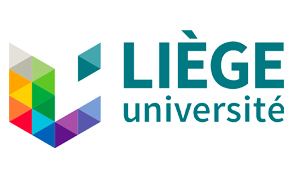
ULiège: Non-Linear Computational Mechanics (LTAS & MN2L)
University of Liège, Faculty of Applied Science, Department of Aerospace and Mechanical Engineering
General expertise of the research group
The MN2L research group aims at developing digital simulation software in mechanics, thermo-mechanics and fluid-structure interactions.
Specific hydrogen- related expertise & research topics
- Among the latest developments from the MN2L Laboratory, designing hydrogen tanks (liquid and gaseous) in composites and metals occupies a significant place.
- Another important aspect of the digital simulation developments is the sloshing of fluids in the tanks, as well as the dynamic behavior of valves and hydrogen distribution circuits in cryogenic conditions. These latter aspects constitute very attractive problems of fluid-structure interactions where the flow of the fluid influences mechanical deformations and where geometric modifications, for example of a valve opening or closing, influence the flow.
Available equipment/tools:
- Simulation software based on Finite Element Method and Particle Finite Element Method
- Computing power
Participating in FL/B/EU funded projects with H2 related research:
- Skywin-Hypster project. “HYPSTER- HYdrogen Propulsion System: Thermique Et Régulation”. Leader: Safran Aero Boosters (SAB). Other involved companies: BeBlue, GDTech, DardenneV2i, Sirris and VKI.
Main relevant publications
- M.L. CERQUAGLIA, G. DELIEGE, R. BOMAN, V. TERRAPON & J.P. PONTHOT (2017) Free-slip boundary conditions for simulating free-surface incompressible flows through the Particle Finite Element Method. International Journal for Numerical Methods in Engineering, Vol. 110, pp. 921-946.
- M.L. CERQUAGLIA, G. DELIEGE, R. BOMAN & J.P. PONTHOT (2017) The Particle Finite Element Method for the numerical simulation of bird strike. International Journal of Impact Engineering 109 (2017) 1-13.
- M.L. CERQUAGLIA, D. THOMAS, R. BOMAN, V. TERRAPON & J.P. PONTHOT (2019) A fully partitioned Lagrangian framework for FSI problems characterized by free surfaces, large solid deformations and displacements, and strong added-mass effects. Computer Methods in Applied Mechanics and Engineering 348 (2019) 409-442
- B.J. BOBACH, R. BOMAN, D. CELENTANO, V. TERRAPON & J.P. PONTHOT (2021) Simulation of the Marangoni Effect and Phase Change Using the Particle Finite Element Method. Applied Sciences, 11. https://doi.org/10.3390/app112411893
- FERNANDEZ, S. FEVRIER, M. LACROIX, R. BOMAN & J.P. PONTHOT (2022)Generalized α-scheme in the PFEM for velocity-pressure and displacement-pressure formulations of the incompressible Navier-Stokes equations. International Journal for Numerical Methods in Engineering, Vol. 124/1, pp. 40-79
- E. FERNANDEZ, S. FEVRIER, M. LACROIX, R. BOMAN, L. PAPELEUX & J.P. PONTHOT (2023) A Particle Finite Element Method based on Level–Set functions. Journal of Computational Physics 487 112187.https://hdl.handle.net/2268/289356
Contact persons
Prof. Jean-Philippe Ponthot
jp.ponthot@uliege.be
ULiège | Department of Aerospace and Mechanical Engineering
Bât. B52/3
Quartier Polytech 1
Allée de la Découverte 9
4000 Liège

